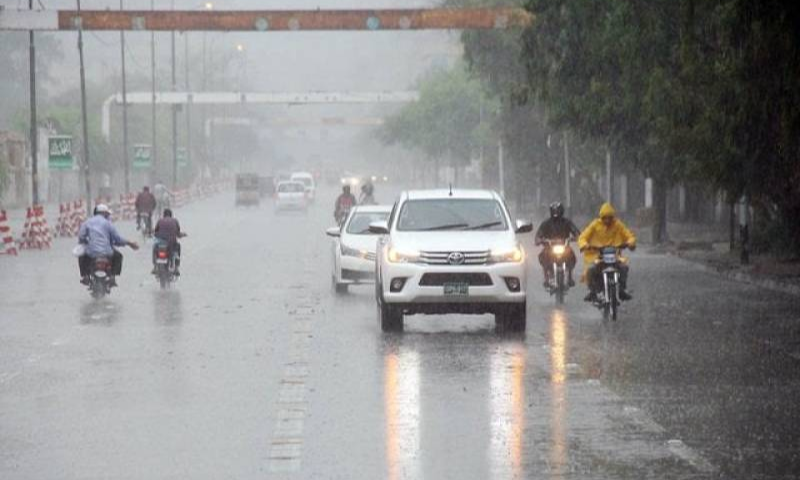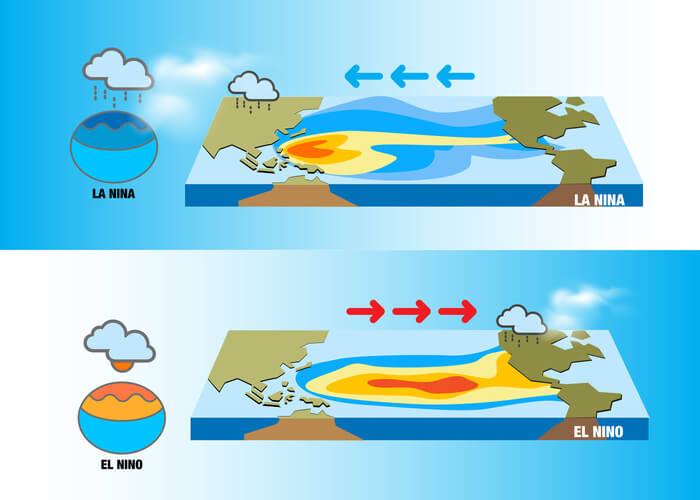Pakistan’s Chief Meteorologist Lahore Shahid Abbas has predicted that monsoon may start in Pakistan next week. Apart from this, they say that the country will receive more than normal rains during the monsoon this year. On the other hand, meteorologists have indicated the possibility of monsoon rains in Karachi from early July.
According to the weather analyst, a medium-intensity low pressure is likely to form over the North Arabian Sea on June 30, which may bring the first monsoon rains in Karachi in the early days of July.
It has been discussed that Karachi may experience more than normal rainfall during the current monsoon season i.e. July to September and all modern models have been agreeing on this for several months now and seem to be predicting that in Sindh province. The current Monsoon season is likely to see more than normal rainfall, mainly due to the end of El Nino which is characterized by increased sea surface temperatures in the Pacific Ocean but now as conditions are neutral (ENSO ) and decreasing sea surface temperatures in the central eastern Pacific indicate that we may soon be dealing with a La Nina situation.
Experts say that the onset of monsoon in Pakistan may be between June 27 and July 4 and this year there is a possibility of more than normal rains in southern Sindh, including Karachi, but this is a long-term forecast that is subject to change.
Pakistan, Monsoon 2024 Comprehensive Review
According to the assessment, which was prepared by 35 experts from across the country, the international weather conditions could remain very favorable for the monsoon, with two factors being discussed: La Niña and the positive Indian Ocean Dipole, which is expected to develop this year. It may lead to more than normal rains across Pakistan, while Karachi is also likely to experience more than normal rains in the monsoon season this year.
According to the overall analysis of meteorologists, there is a chance of abnormal rains (57.8%) across the country during monsoon 2024 (June to September) this year. which has a standard deviation of ±38.7%. That is, the overall rainfall can be between maximum (96.5%) and minimum (19%). It may be noted that during the monsoon season 2022 (June to September), a total of 162% above normal rainfall was recorded across the country.
According to the overall opinion of the experts, (47.2%) believe that there are chances of abnormal rains during the upcoming monsoon season, (44.2%) have placed the whole country in the category of above normal rains while only (% 8.3) opined that the monsoon season is likely to be normal this year.
Following are the overall features of expert opinion at the provincial level regarding monsoon season 2024.
Punjab:
Punjab is likely to receive above normal (19.4%) rainfall during Monsoon 2024 (June to September) this year. which has a standard deviation of ±19.6%. That is, the overall rainfall in the province can be between maximum (%39.1) and minimum (%-0.2).
Similarly, according to the overall opinion of the experts, there is only (5.6%) possibility of abnormal rains in Punjab, the majority of members i.e. (63.9%) have placed the entire province in the category of more than normal rains while (30.6%) He expressed his opinion that there may be normal rains in the monsoon season this year.
Sindh:
Sindh has an overall abnormal (103.9%) chance of rainfall during Monsoon 2024 (June to September) this year. which has a standard deviation of ±62.4%. That is, the overall rainfall in the province can be between maximum (166.4%) and minimum (41.5%).
If we look at the chances of rains, according to experts, there is a strong (80.6%) chance of unusual rains in Sindh province, while a small number of members (16.7%) expressed their opinion that this year’s monsoon season will be normal. There may be more rains. At the same time, only 1 member out of 36 urged Sindh province to receive normal rainfall.
Khyber Pakhtunkhwa:
Khyber Pakhtunkhwa has an overall average (8.1%) chance of rainfall during monsoon 2024 (June to September). which has a small standard deviation of ±14.3%. That is, the overall rainfall in the province can be between maximum (22.3%) and minimum (6.2-%).
Regarding Khyber Pakhtunkhwa, conflicting opinions were found among the experts. Only 1 member placed the province in the category of abnormal rainfall. (38.9%) members agreed on above normal rainfall, (47.2%) on normal while (11.1%) agreed on below normal rainfall.
Balochistan:
During monsoon 2024 (June to September), experts have predicted maximum rainfall for Balochistan province. In which overall (%140.2) i.e. there is a possibility of very high (abnormal) rains. Also the wide standard deviation of ± 129.1% suggests this. That the rains in the province can be very uncertain. Overall rainfall can range from either maximum (269.3% flood rainfall) or minimum (11% slightly above normal).
Similar to Sindh, in Balochistan province, a large number of members (77.8%) emphasized seeing abnormal rainfall, (13.9%) above normal and (8.3%) normal rainfall.
Kashmir:
Now talking about the northern regions of the country, first of all Azad Kashmir has an overall normal (6.4%) rainfall with a standard deviation of ± 12.7% during the monsoon year 2024 (June to September). There are possibilities. Rainfall can range between maximum (%19.1) and minimum (-6.3%).
Out of the total number of experts, only 1 expected abnormal rainfall, 22.2% above normal, majority (69.4%) normal and some (5.6%) expected below normal rainfall.
Gilgit-Baltistan:
Monsoon 2024 (June to September) is expected to be similar in the valleys of Gilgit-Baltistan. The overall probability of rainfall is about normal (2.9%) with a standard deviation of ± 27.4% according to the mean of public opinion. Rainfall can range between maximum (30.3%) and minimum (-24.4%).
Out of the total number of experts (8.3%) predicted abnormal rainfall, 19.4% above normal, (30.6%) predicted normal (41.7%) below normal rainfall trend. .
More than normal rain forecast
The India Meteorological Department (IMD) has also predicted more than normal rainfall this year. Quantitatively, this is expected to be 106 percent of the long-term average of 880 mm (1971-2020 data).
The above-normal rainfall is mainly being attributed to the early onset of La Nina, which is known to have a positive effect on the monsoon in India.
Where did the monsoon reach?
The monsoon reached the Andaman Sea and Nicobar Islands on May 19 and hit the Kerala coast on May 30, two days ahead of its normal date. The storm made landfall over parts of Nagaland, Manipur, Mizoram, Arunachal Pradesh and Tripura six days ago, a rare but unusual occurrence over Kerala and large parts of eastern India simultaneously.
Monsoon advanced every day after 30 May and by 10 June it had reached Andaman and Nicobar Islands, Kerala, Lakshadweep, Mahe, Tamil Nadu, Puducherry, Karnataka, Telangana and large parts of Andhra Pradesh and Maharashtra.
Monsoon has stagnated since June 11 and dry and hot conditions have returned to the southern peninsula. Rainfall has been consistently below average across India for the past one week. On Tuesday it was minus 20 per cent (64.5 mm against the normal 80.6 mm).
‘Initially the monsoon came as a big wave but not much rain.’ Former Secretary of the Ministry of Earth Sciences M Rajeev says that contrary to expectations, this is not a normal monsoon.
The overall deficit is mainly due to states where the onset of monsoon has been delayed. These include Odisha (minus 47 percent), West Bengal (minus 11), Bihar (minus 72) and Jharkhand (minus 68).
Return of dry conditions in Manipur, Mizoram, Lakshadweep, Nagaland, Kerala, Arunachal Pradesh, Andaman and Nicobar Islands also contributed to low rainfall across the country.
Monsoon is currently underway in Arunachal Pradesh, Assam, Meghalaya, Sikkim, Nagaland, Manipur, Mizoram, Tripura and sub-Himalayan West Bengal. Rain will intensify over Konkan and North Karnataka this weekend, but rest of India will remain dry.
It is not clear when the monsoon will begin in northern India along the Pakistani border.





